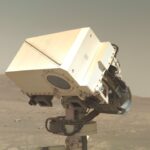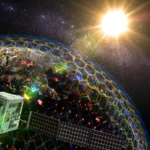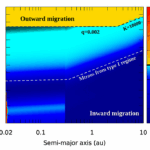A team of researchers has confirmed stars ring loud and clear in a “key” that will harmonize well with the science goals and capabilities of NASA’s upcoming Nancy Grace Roman
phys.org7- Page
About 4.5 billion years ago, the most momentous event in the history of Earth occurred: a huge celestial body called Theia collided with the young Earth. How the collision unfolded
A crew of tiny worms will be heading on a mission to the International Space Station in 2026 that will help scientists understand how humans can travel through space safely,
A geomagnetic superstorm is an extreme space weather event that occurs when the sun releases massive amounts of energy and charged particles toward Earth. These storms are rare, occurring about
NASA unveiled close-up pictures on Wednesday of the interstellar comet that’s making a quick one-and-done tour of the solar system.
The nature of time has plagued thinkers for as long as we’ve tried to understand the world we live in. Intuitively, we know what time is, but try to explain
Let’s rewind the clock back…oh, I don’t know, let’s say a hundred years. It was 1917, and Einstein had just developed his general theory of relativity. It was a masterpiece,
The international LIGO-Virgo-KAGRA Collaboration has completed the fourth observation campaign (called O4) of the international network of gravitational wave detectors. Launched in May 2023, the campaign ends after a period
All around us are elements forged in stars, from the nickel and copper in coins to the gold and silver in jewelry. Scientists have a good understanding of how these
At this point in history, astronomers and engineers who grew up watching “Deep Impact” and “Armageddon,” two movies about the destructive power of asteroid impacts, are likely in relatively high
-
 012024 in Review: Highlights from NASA in Silicon Valley
012024 in Review: Highlights from NASA in Silicon Valley -
 02Panasonic Leica Summilux DG 15mm f/1.7 ASPH review
02Panasonic Leica Summilux DG 15mm f/1.7 ASPH review -
 03How New NASA, India Earth Satellite NISAR Will See Earth
03How New NASA, India Earth Satellite NISAR Will See Earth -
 04From Polymerization-Enabled Folding and Assembly to Chemical Evolution: Key Processes for Emergence of Functional Polymers in the Origin of Life
04From Polymerization-Enabled Folding and Assembly to Chemical Evolution: Key Processes for Emergence of Functional Polymers in the Origin of Life -
 05And Thus Begins A New Year For Life On Earth
05And Thus Begins A New Year For Life On Earth -
 06Astronomy Activation Ambassadors: A New Era
06Astronomy Activation Ambassadors: A New Era -
07SpaceX launch surge helps set new global launch record in 2024





